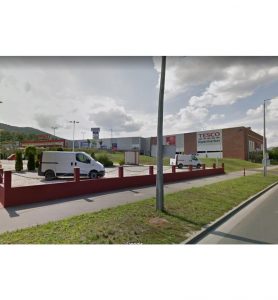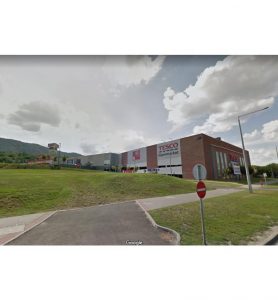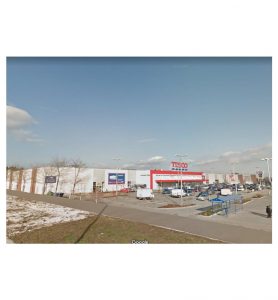Roman villa by the Bécsi Road TESCO
In Óbuda we can come across Roman remains or modern structures hiding them if we take a quick look every now and again to the right or the left. Last time we’ve left off at the Bécsi Road and Vörösvári Road intersection. Let’s continue now with the site of the Bécsi Road TESCO, where the buildings of a Roman villa estate and small archaeological finds have come to light.
So where are we now?
Leaving behind the traffic hub of the Bécsi Road/Vörösvári Road intersection, we continue on the outbound Bécsi Road. Some 1.5 km after the intersection, we reach the subject of today’s blog post. Unlike in previous posts, we’ll be looking not at conserved and restored Roman remains, but their traces marked now by modern buildings.
But first the history!
The area in question served many functions in the Roman period. After all, from the late 1st century onwards it was very close to the north-western edge of the Aquincum Military Town (the settlement around the legionary fortress). A cemetery and industrial sites (e.g. pottery workshops) were located in the area, and of course there was the important Roman road that preceded today’s Bécsi Road. Dotting the road roughly every half kilometre were villa estates that formed a dense suburban belt at the edge of the Aquincum settlements.
What can we see today?
Unfortunately none of this is visible; the excavation sites have all been built up. In 2007, prior to the supermarket’s construction, archaeologists found buildings belonging to a Roman villa estate. The estate was arranged in terraces and the buildings on it were painted white and had tiled roofs. In one of the buildings even the doorway was discovered. Other finds (e.g. box tiles for heating flues) indicate the presence of underfloor heating. Based on everyday objects (pottery, coins) found in the buildings, we can date the villa’s construction to the early 2nd century. It remained in use until the early 4th century.
Soon we’ll continue our search for Roman remains as there are still plenty of other hidden and conspicuous monuments to discover in Óbuda beyond the legionary fortress and the Military Town; but more on those later.
All in all, I encourage everyone to have a look at the modern buildings marking ancient ‘villa belt’ on foot, or from your car on a warm summer morning – but only when the traffic isn’t moving!
Images from: Google Street View
Written by: Dr Orsolya Láng
Edited by: Dániel Kővágó





